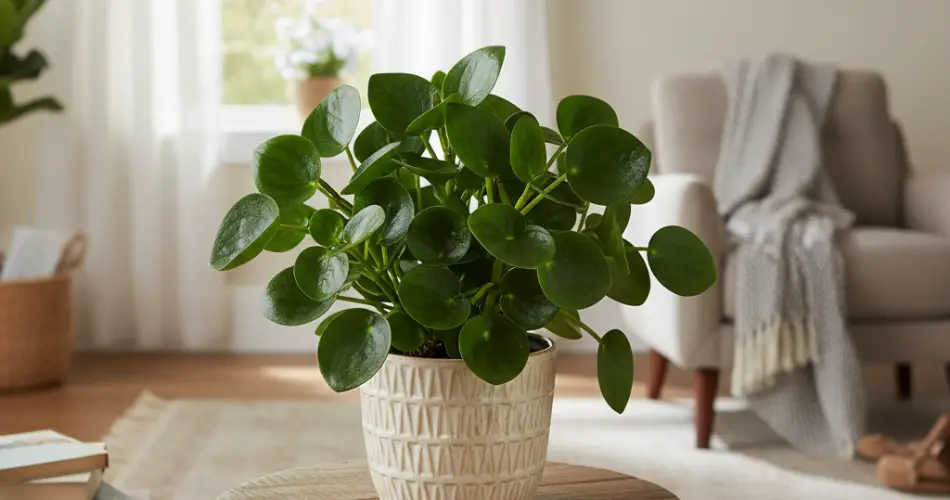Peperomia plants are a favorite among indoor gardeners due to their compact size, attractive foliage, and low-maintenance care requirements. With hundreds of species, including Peperomia obtusifolia, Peperomia caperata, and Peperomia argyreia, these plants offer a variety of leaf shapes, textures, and colors, from glossy green to silver-striped or red-toned varieties. One of the most important factors in keeping Peperomia plants healthy is light. Understanding whether they thrive in bright or low light ensures vibrant growth, strong stems, and well-shaped leaves.
Native Habitat and Natural Light
Peperomias are native to tropical and subtropical regions of Central and South America, often growing under the canopy of larger trees. In these environments, they receive filtered sunlight, which means they are accustomed to bright, indirect light rather than direct sun. This natural adaptation explains why Peperomias can tolerate lower-light indoor conditions while still benefiting from moderate brightness to enhance leaf color and growth.
Bright, Indirect Light: Optimal for Growth
Peperomias thrive in bright, indirect light, which encourages robust foliage and maintains vibrant leaf colors. Bright light supports compact growth, prevents leggy stems, and allows leaves to display their characteristic patterns and hues.
Indoor placement tips for bright, indirect light:
-
East-facing windows: Morning sunlight provides gentle illumination, perfect for Peperomia growth.
-
North-facing windows: Moderate, indirect light maintains steady development.
-
Filtered south- or west-facing windows: Sheer curtains or positioning the plant a few feet away from direct rays protects delicate foliage from scorching.
When placed in bright, indirect light, Peperomias develop healthy, full leaves, producing a lush and visually appealing appearance.
Low Light Tolerance
One of the major advantages of Peperomia plants is their ability to tolerate low-light conditions, making them ideal for offices, bedrooms, or rooms without abundant natural sunlight.
In low-light environments, expect:
-
Slower growth and fewer new leaves.
-
Leaf color may become darker, and variegation may fade slightly.
-
Stems may stretch slightly toward the light source, causing a slightly leggy appearance.
While Peperomias can survive in low-light conditions, they grow more slowly and may lose some of their vibrant appeal. For best results, supplementing with artificial lighting or occasionally relocating to a brighter spot is recommended.
Direct Sunlight: What to Avoid
Although Peperomias enjoy bright light, direct sunlight can damage the leaves. Strong sun exposure, particularly from south- or west-facing windows, can scorch the foliage, causing brown tips, faded colors, and leaf curling.
To protect your plant:
-
Keep it a few feet back from windows receiving direct sunlight.
-
Use sheer curtains to filter harsh rays.
-
Acclimate the plant gradually if moving from a low-light to a bright-light area.
Avoiding direct sunlight ensures that Peperomia leaves remain healthy, glossy, and free from burn damage.
Artificial Lighting for Indoor Growth
In spaces where natural light is limited, Peperomias respond well to artificial lighting. Fluorescent or LED grow lights provide sufficient intensity for maintaining healthy growth and vibrant foliage.
Tips for artificial lighting:
-
Use full-spectrum lights to mimic sunlight.
-
Position lights 12–18 inches above the plant.
-
Provide 10–12 hours of light per day to support consistent growth.
Artificial lighting is especially helpful in offices, rooms with small windows, or during winter months when daylight is limited.
Seasonal Adjustments
Lighting requirements for Peperomias may change with the seasons:
-
Summer: Avoid prolonged exposure to direct afternoon sunlight, which can scorch leaves.
-
Winter: Move plants closer to bright windows or supplement with grow lights to compensate for shorter daylight hours.
Rotating your Peperomia every few weeks ensures even growth and prevents uneven stretching toward the light source.
Signs of Improper Light
Peperomias provide clear visual cues if their lighting needs are not met:
-
Too little light: Slower growth, dull or darkened leaves, and leggy stems.
-
Too much direct light: Leaf scorch, brown tips, fading, and curling.
-
Optimal light: Compact, full growth with vibrant, glossy foliage.
Monitoring these signs allows you to adjust the plant’s placement to maintain healthy, attractive growth.
Final Thoughts
Peperomia plants are versatile, low-maintenance houseplants that adapt well to a variety of lighting conditions. While they can tolerate low-light environments, they thrive in bright, indirect light, which encourages vibrant foliage, compact growth, and a lush, attractive appearance.
For optimal care, place your Peperomia near east- or north-facing windows, filter south- or west-facing light, or supplement with artificial lighting if natural light is insufficient. By providing the right balance of light, you can enjoy a thriving, healthy Peperomia that adds color, texture, and charm to any indoor space year-round.



